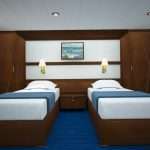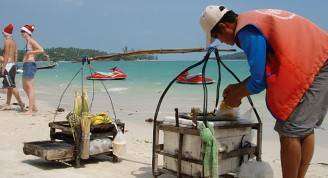Description
Remote means remarkable on this Arctic adventure during the region’s spring awakening. Weave through towering fjords and secluded cliffs blanketed in Atlantic puffins. Visit polar islands accessible only by ship, including the world’s most northern volcano, breeding site of hundreds of thousands of northern birds. Large masses of pack ice still intact provide ample opportunity to spot roaming polar bears and possibly a bear cub, or two. Defined by endless moments of bird and bear sightings, this trip delivers a polar experience teeming with wildlife.
Trip Name
Fair Isle, Faroes, and Spitsbergen: Birds and Bears
Days
11
Overview
Vessel Type: Comfortable Expedition
Length: 90 metres
Passenger Capacity: 118
Built / refurbished: 1975 / 1998 / 2017 - re-named to the Ocean Adventurer in June 2017
The new and improved Ocean Adventurer is designed to carry 132 travelers in comfort to the most remote corners of the world. Originally built in Yugoslavia in 1976, this nimble, ice-strengthened ship has become a passenger favourite over the years and underwent refurbishments in 1999 and 2002 with the most significant being in 2017.
With the latest rounds of refurbishments guests will enjoy:
• A refreshed, contemporary new look and feel throughout the ship.
• The addition of six new twin cabins and three new suites.
• All existing cabins will be furnished with all new soft furnishings and brand new bathrooms.
• Main common areas such as the Lounge and Dining Room will be remodeled as well as the Bar.
• Major technical enhancements – include two new Rolls Royce engines, which will significantly increase fuel efficiency and minimized carbon footprint.

















